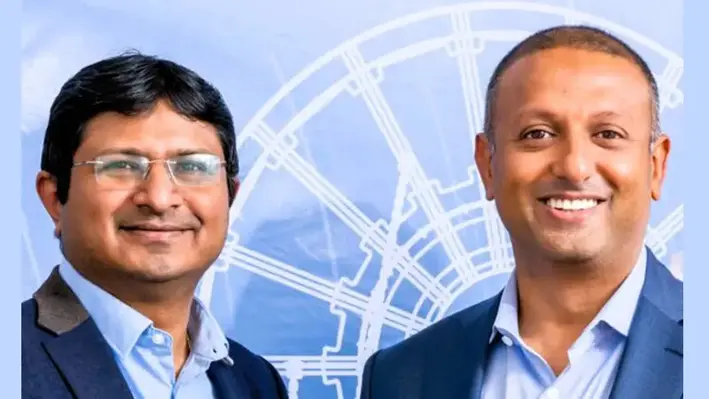
 With an aim to expand its engineering and procurement services to support operations and decommissioning in the North East, Tattva Group has announced a UK£2mn investment in Project Development International (PDi).
With an aim to expand its engineering and procurement services to support operations and decommissioning in the North East, Tattva Group has announced a UK£2mn investment in Project Development International (PDi).
This will support not only the advancement of PDi’s offerings in subsea engineering and decommissioning but also enhance its wider engineering services in topsides. This allows the company to serve the nation at an apt time, as it navigates policy uncertainty and supply chain volatilities.
Welcoming the move as 'a vote of confidence' for PDi, the company's new CEO, Girish Kabra, said, “Tattva Group’s commitment to PDi — especially amid current policy uncertainty from the UK Government and pressures facing the supply chain – is welcomed, to boost workforce confidence and support the collective regional effort to retain skills in the North Sea.”
“This strategic capital injection of UK£2mn empowers us to expand and elevate our engineering and procurement services, with a sharpened focus on supporting late-life asset management and decommissioning activities. We’re committed to delivering even more flexible and value-added solutions, addressing the evolving needs of the UK energy sector and solidifying PDi’s position as a key partner in the North Sea’s future. This investment means greater capacity, deeper expertise, and a more robust offering to help all our clients and customers navigate their operational and decommissioning challenges efficiently and effectively.”
Explaining the copmpany's strategy behind the move, TR Narayanaswamy, Group Chairman of Tattva, said, “We see a gap in the market where operators are seeking more flexibility and value-added service offerings...With its refreshed management team and focus, PDi is uniquely positioned to meet that need and deliver long term value to clients.”

 Norwegian operator Aker BP has received approval from the country’s offshore safety regulator to deploy two of Island Offshore’s mobile offshore units across its operated fields on the Norwegian Continental Shelf.
Norwegian operator Aker BP has received approval from the country’s offshore safety regulator to deploy two of Island Offshore’s mobile offshore units across its operated fields on the Norwegian Continental Shelf.
According to the Norwegian Ocean Industry Authority (Havtil), the consent covers the use of the Island Constructor and Island Wellserver vessels for riserless light well intervention (RLWI) activities on all of Aker BP’s production licences, as mention in Offshore Energy.
The Island Constructor, delivered in 2008 and built to the Ulstein SX 121 design, is a multi-purpose offshore vessel with accommodation for 90 personnel. The unit has been cleared for Norwegian operations since obtaining its Acknowledgement of Compliance (AoC) from the Petroleum Safety Authority in April 2010.
Its sister vessel, the Island Wellserver, also delivered in 2008, is equipped to carry out a wide range of subsea and intervention tasks. These include light well intervention, construction and installation work, well securing, trenching, tower and module handling, plug and abandonment (P&A), crane operations, inspection, maintenance and repair (IMR), supply duties and X-tree installation. The 116-metre vessel remains a core asset for Island Offshore’s well intervention campaigns.
Island Offshore previously secured a two-year extension for Island Wellserver in May 2023 for continued light well intervention work on the NCS, with additional options for further activity. The Island Constructor received a separate consent in 2023 allowing RLWI operations without risers on production licences 359, 338 C and 028 B.
The company is also enhancing its fleet to support future demand. VARD recently marked the keel-laying of Island Offshore’s second hybrid-powered ocean energy construction vessel, underscoring the firm’s ongoing investment in next-generation offshore capabilities.

 Last week the industry’s finest gathered in Aberdeen to see who will be crowned this year’s well intervention champions!
Last week the industry’s finest gathered in Aberdeen to see who will be crowned this year’s well intervention champions!
The annual celebration saw a panel of expert judges acknowledge the very best in global well intervention excellence.
This year’s winners included:
A huge congratulations to all the winners and nominees, and a big thank you to everybody who attended! We look forward to another year of seeing this industry push boundaries and drive the wider offshore community into the future.
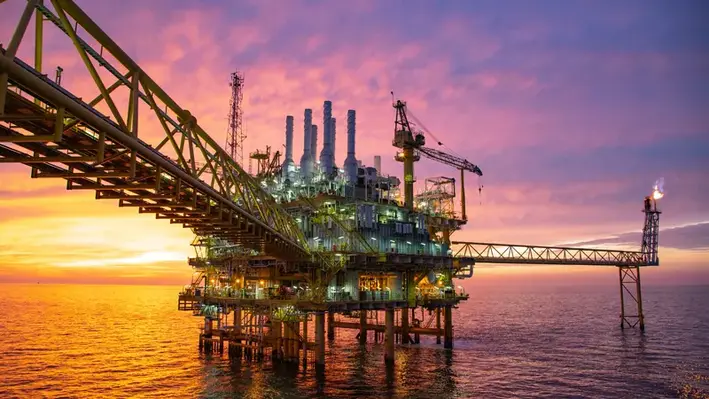
 Adverse weather conditions have disrupted TotalEnergies EP Danmark’s operations, delaying production from the remaining fields at its natural gas redevelopment project in the Danish sector of the North Sea.
Adverse weather conditions have disrupted TotalEnergies EP Danmark’s operations, delaying production from the remaining fields at its natural gas redevelopment project in the Danish sector of the North Sea.
As a result, the company has updated its timeline for achieving full production capacity at the Tyra gas field, Denmark’s largest natural gas field.
The Tyra redevelopment project has been underway since March 2024, with the first gas export from Tyra II marking the successful initial production following a major revamp. However, challenges have emerged in the process of reactivating and optimising offshore wells, particularly in relation to the reactivation of the Tyra satellite wells. These wells are critical to achieving the anticipated production plateau, and the necessary well interventions have been delayed by adverse offshore weather.
A key operational challenge arose from issues related to two transformers supplying power to essential gas compressors, which have impeded the full commissioning of the project. Despite these setbacks, TotalEnergies has made significant progress in repairing and commissioning equipment, although the anticipated timeline for full technical capacity was initially set for mid-November 2024. Uncertainties about remaining operational conditions have led to delays.
The ramp-up phase, which is closely tied to well intervention activities, has allowed for gas production to be restored from three of the six fields. However, due to weather conditions and other operational issues, the reactivation of the Tyra satellite wells has faced further delays. Offshore weather constraints, including limited weather windows, have hindered the progress of well interventions and postponed the critical reactivation of these satellite wells.
Given the current weather forecasts, the timeline for reactivating all satellite wells to achieve plateau production has been extended by approximately three weeks. The revised timeline now places the expected achievement of plateau production in the second half of January 2025.
The Tyra field is part of the Danish Underground Consortium, with TotalEnergies EP Danmark (43.2%), BlueNord (36.8%), and Nordsøfonden (20%) as the key stakeholders.
Euan Shirlaw, CEO of BlueNord, commented, “Although it is disappointing that plateau production is now expected in the new year, we are confident that the recent above-ground challenges are well understood. Once the remaining satellite wells have been reactivated, the performance of the field will no longer be constrained by weather, as has been the case during the startup phase. We look forward to reaching plateau production in January 2025 and sharing the promising results of our HEMJ program.”
TotalEnergies points out that oil and gas supply nearly 50% of Denmark’s energy needs, and once the Tyra field reaches plateau production, it is expected to contribute around 6% of the European Union's natural gas output, marking Denmark’s return as a net gas exporter.
Additionally, in June 2024, drilling operations in the Harald East area, conducted with the Shelf Drilling Winner jack-up rig, led to the discovery of additional gas condensate resources in the Harald field, which is located in shallow waters 250 km off Denmark's west coast. These new reserves could further boost production from the region, with ongoing well intervention efforts to optimise the production from the field.


In its latest operations update, British independent upstream oil and gas company, Serica Energy, announced that its investment plans for the Bruce and Keith Light Well Intervention Vessel (LWIV) campaign is on track to take place between March and May 2024.
This follows previous campaigns in 2022 and 2023, which have delivered low-cost incremental production. The intervention is expected to restart production from the Keith field this year following successful preparation work on the Keith subsea facilities carried out in 2023. Additional well interventions from the Bruce platform are scheduled for the second half of 2024.
Besides well work on the Bruce and Keith fields, investments in 2024 include four wells in the Triton area (Bittern B1z sidetrack, Gannet E GE-05, Guillemot North West EC1 and Evelyn EV-02). The start date of the B1z sidetrack is set in March 2024. This well and the subsequent three wells are scheduled to take about three months each, meaning that drilling will continue into 2025. Serica has also exercised an option to keep the rig for a further well following completion of the fourth well in the programme (EV-02).
Serica is maturing plans for two infill wells on the Bruce field too with the aim of drilling in 2026.
Abandonment costs in 2024 are forecast to be about £14 million (pre-tax) net to Serica. These will be incurred mainly on the final decommissioning of the Arthur field, situated in the UK Southern North Sea, which was held by Tailwind Energy.
Reflecting on Serica's investment focus on enabling maximum production like from the Bruce and Triton assets, Mitch Flegg, Chief Executive of the company, said, "Production in 2024 is expected to be higher than in 2023 with guidance between 41,000 boe/d and 48,000 boe/d for the year. This reflects a range of outcomes in a year of significant activity including the speed with which the scheduled drilling and well work deliver incremental production.
"Serica's strategy of investing in its assets continues to be central to our record of consistently achieving high levels of reserves replacement, combined with increased levels of production. We are looking forward, therefore, to the start of the four well Triton area drilling programme in March, with the benefits of added production expected to start coming through in the second half of the year. During 2024 there is also an extensive programme of interventions in both platform and subsea wells on the Bruce and Keith fields. The objectives include re-establishing consistent production from the Keith field.
"In addition, Serica has a healthy portfolio of potential new projects. This includes the possible developments of the Buchan and Belinda fields, which offer the prospect of further replacement of produced reserves and incremental production from 2026 onwards. Our plans for drilling two Bruce infill wells, the first new wells on the field since 2012, are progressing and, during the next eighteen months, we will be participating in the Parkmead operated Skerryvore exploration well situated in the UK Central North Sea. As a UK taxpayer, Serica will benefit from tax relief for its share of the associated development and exploration costs.
"Serica is extremely well placed, therefore, to continue its track record of replacing reserves and increasing production. This platform has been achieved while maintaining a very strong balance sheet, which is both the result and enabler of our strategy to invest and grow organically and through disciplined M&A."

 Norwegian energy producer Equinor will deploy Emerson's suite of Roxar downhole monitoring tools to achieve optimal results from the Rosebank oil and gas field offshore the United Kingdom.
Norwegian energy producer Equinor will deploy Emerson's suite of Roxar downhole monitoring tools to achieve optimal results from the Rosebank oil and gas field offshore the United Kingdom.
With an estimated capacity of more than 300 million barrels of recoverable oil resources, the Rosebank field is considered a significant asset in meeting the UK’s energy security requirements. The first phase of the Rosebank field development will involve a refurbished, electrification-ready floating production storage and offloading vessel connected to a subsea production system. Startup of the Rosebank field’s first phase is planned for 2026-2027.
Emerson's advanced well completion monitoring systems enable advanced oil recovery techniques, optimise reservoir performance and verify well integrity in real time. A challenging task amid harsh environment conditions, the Roxar integrated downhole network technology provides an uninterrupted coverage of pressure and temperature data from active wells, which leads to safe operation, production optimisation and well integrity maintenance.
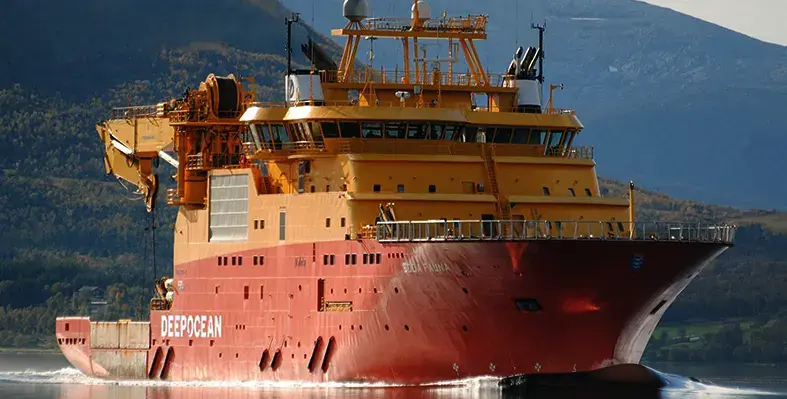
 Equinor has awarded DeepOcean a four-year frame agreement for marine services that includes subsea intervention and repair contingency for subsea pipelines, structures and high voltage cables for not only oil and gas fields but also offshore renewables.
Equinor has awarded DeepOcean a four-year frame agreement for marine services that includes subsea intervention and repair contingency for subsea pipelines, structures and high voltage cables for not only oil and gas fields but also offshore renewables.
The agreement comes with a scope for extension up to another four years.
Geographically the agreement is valid for work on the Norwegian continental shelf and internationally for planned Equinor work and for contingency work for the PRSI pool members, which comprises 23 energy companies that cover their offshore pipeline and power cable repair contingency via the pool.
The contract delivery will be managed by DeepOcean from its Haugesund-based office in Norway.
“Such a long-term agreement allows us to constantly evolve working methods, collaboration models and technologies, with the objective of making offshore operations and subsea cable repair work as cost-effective as possible. We look forward to supporting Equinor and the PRSI Pool members over the coming years,” said Olaf A Hansen, Managing Director of DeepOcean’s European operation.
For work in the offshore oil and gas industry, the frame agreement covers planned or unplanned marine services using remote operated intervention methods with or without the use of PRS equipment.
Under the agreement, DeepOcean is also expected to be equipped to produce multiple engineering or preparedness studies as requested by Equinor or PRSI pool members.
“DeepOcean has a 400 people-strong engineering team that are specialists on solving subsea challenges across industries. We are industry agnostic and share learnings and experiences from subsea operations across different types of operations and industries in order to develop the best possible solutions for our clients. Our experience from oil and gas is highly valuable for offshore renewables – and vice versa," said Normann Vikse, Offshore Renewables Director at DeepOcean.
DeepOcean has already received the first call-offs for work under the new frame agreement.
On behalf of Gassco and Equinor, DeepOcean will perform seabed preparations and complex remote hot tap tie-in operations at three different locations on the Norwegian continental shelf. Hot tapping is a method of connecting to a pressurised system, such as a pipeline, without removing the pipe from service.
On behalf of Gassco with Equinor acting as technical service provider, DeepOcean has already performed marine services to support baseline inline inspection of a large sized pipeline.
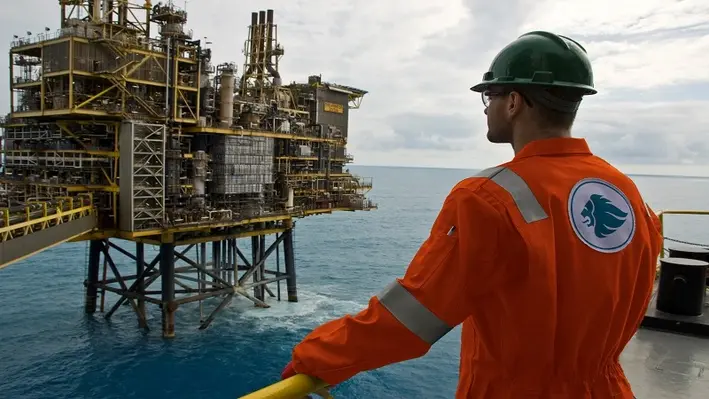
Energy services provider Expro has announced it has entered into a definitive agreement to acquire Coretrax, a technology leader in well integrity and production optimisation solutions, from an investment group led by Buckthorn Partners.
The acquisition of Coretrax will enable Expro to expand its portfolio of cost-effective, technology-enabled well construction and well integrity solutions, particularly across the North and Latin American, Europe and sub-Saharan Africa, and the Middle East and North Africa. Building on Coretrax’s successful 15-year history, the acquisition will accelerate the availability of the company’s innovative tools by leveraging Expro’s global operating footprint.
Michael Jordan, Chief Executive Officer, said, “We are thrilled to announce our proposed acquisition of Coretrax and look forward to welcoming John Fraser and his teammates to the Expro family.
“Coretrax has a complementary offering to Expro with little overlap and will bolster the portfolio of technology-enabled services and solutions offered through our Well Construction and Well Intervention & Integrity product lines, adding significant value to our clients from innovative technologies that reduce risk and cost, optimise drilling efficiency, extend the life of existing well stock, and optimise production.”
John Fraser, CEO at Coretrax, commented, “The synergies between our respective technology portfolios will enable us to grow our market share while significantly increasing our capabilities to tackle the most complex well challenges. We are proud of the innovation-led approach, strong customer base and performance history that we developed over the last 15 years, and we look forward to joining forces with Expro to create greater value for our customers globally.”
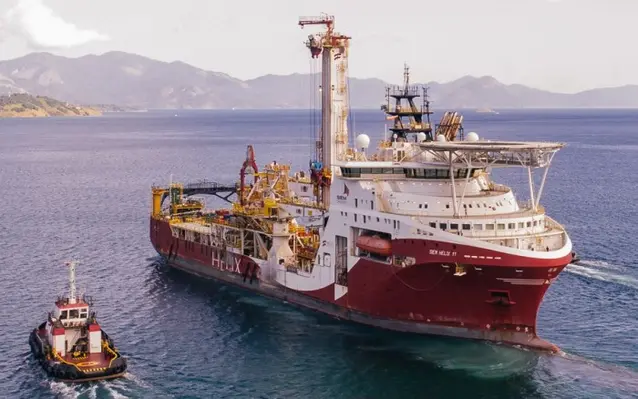
Siem Offshore has secured long-term contracts with Helix Energy Solutions for two of its Siem Helix well intervention vessels.
The two contracts for Siem Helix 1 and Siem Helix 2, valued at US$682mn, will come into effect from 1 January, 2025, and 1 January, 2026, respectively and will replace existing agreements to ensure firm utilisation for these vessels until at least 2030.
Each vessel will have a duration period of six years, with an optional extension period of up to five years, the contracts provide a solid foundation for future endeavors and growth for Siem Offshore. Siem Helix vessels have played a crucial role in the well intervention segment, and the longstanding partnership between Siem and Helix is a testament to the success both companies have endured.

Oilenco Ltd has been awarded a contract for the provision of engineering and manufacturing services for a major North Sea operator.
The contract will see Oilenco provide well intervention and downhole equipment throughout a 52-well subsea plug and abandonment campaign, as well as its range of services including engineering, CNC machining, assembly, and maintenance services.
Blair McCombie, Operations Director at Oilenco, commented, “This contract award is an outstanding achievement for Oilenco. Not only does it demonstrate our capability to provide high-quality P&A solutions, but our clients will benefit from our breadth of knowledge and experience in this market.
“As Oilenco celebrates turning 15 this year, securing this contract and being part of this significant P&A campaign is a fantastic way to kick-start our celebrations.”
Oilenco has been providing P&A tooling solutions to the UKCS for more than six years, accounting for a significant growth area within the company through the provision of hybrid plugs, remote opening devices, and scale remedial solutions in its extensive fleet.
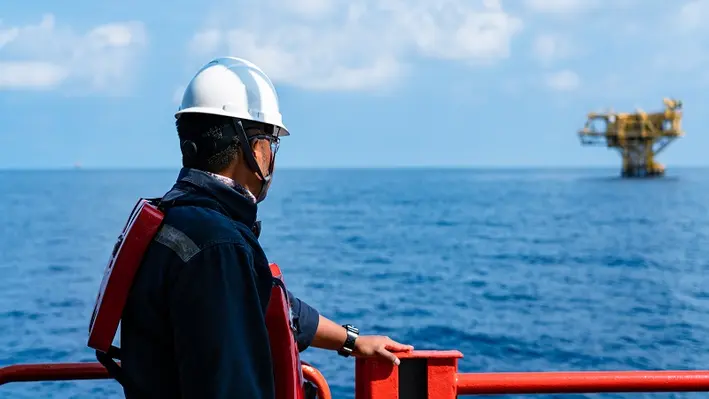
Serica Energy has provided an organisation and operations update, charting the successful operations it has carried out in the North Sea since September.
The latter half of 2023 has seen Serica successfully carry out the summer shutdowns at both the Bruce and Triton fields. In the former, the shutdown workscope was completed later than planned due to the decision to carry out permanent rather than temporary repairs on the flare tower.
Strong levels of production have been established from both the Bruce and Rhum fields with Serica’s average production entitlement being over 24,000 boe per day during the last four weeks.
Commencing in September, Serica has been conducting its second Light Well Intervention Vessel (LWIV) campaign on the Bruce field. This has involved successfully re-entering three wells to identify areas of scale build-up, perform water shut offs and perforate target intervals. With work on one well still to finish, there has been an uplift in overall production from the re-entered wells of about 2,500 boe per day so far.
Serica has now intervened on five of the subsea wells that form the Western Area Development (WAD) part of the Bruce complex. Since taking over operatorship, Serica has also re-entered fourteen Bruce platform wells. The results have demonstrated the benefits of low cost well interventions and a third LWIV campaign is planned during 2024 which will involve work on both Bruce and Keith wells. The inventory of platform wells on the Bruce field is also being high graded for potential future interventions.
The company is also currently carrying out vessel-based final abandonments of four exploration and appraisal wells on the Keith field and the North Eigg exploration well. This campaign is consistent with the NSTA’s initiative to reduce the number of suspended inactive wells in the UK North Sea. The abandonments are scheduled to be completed in late December 2023.
At Triton, the summer shutdown was completed in September 2023 with the activities carried out including essential fabric maintenance and inspections, a further phase of the control systems upgrade and preparation for the reinstatement of water injection on the Bittern field, which is planned to restart in early 2024. Good production rates are being achieved from all of Serica’s fields in the Triton Area.
During the middle of this year, a rig-based well intervention campaign was carried out on the Guillemot West and North West fields. These were the first such interventions on the fields in over ten years and have resulted in incremental gross daily production of about 1,500 barrels of oil from one well and 12 million cubic feet of gas from another, both of which had been shut-in for lengthy periods.
Mitch Flegg, Chief Executive of Serica, explained, “I am pleased to report the successful conclusion of the planned summer shutdowns on Serica’s Bruce and Triton hubs and the re-establishment of strong levels of production at both. During the last month Serica has been consistently achieving production rates in excess of 50,000 boe per day. Overall production guidance for the year is unchanged reflecting delayed production restarts and slower than expected production ramp-ups after the summer shutdowns.
“I am also pleased to report successful well campaigns on the Bruce and Guillemot fields during 2023. These are further proof of the benefits to be had from low cost, short cycle investments in our existing asset portfolio. The full impact on production of the well work carried out this year is expected to be felt in 2024, aided by the work on the Bruce facilities deferring the need for another major shutdown until 2025.
“The LWIV vessel used on Bruce is already booked for a third campaign in 2024, which will target wells on both the Bruce and Keith fields. We are also looking forward to the start of a four well drilling campaign in the Triton area, with the first well on the Bittern field scheduled to begin around the middle of the first quarter. 2024 is anticipated to be a very busy and impactful year of investments in Serica's North Sea portfolio.”


An enormous congratulations to the OWI Global Awards 2023 winners who were crowned in Aberdeen last week during a night filled with fun, food and festivities, where the offshore well intervention community gathered to cap the year of with a bang!
At the annual celebration, a panel of expert judges acknowledged the very best in global well intervention excellence and were tasked with picking out the best from a competitive field of submissions. However, for going above and beyond, there were some who stood out slightly higher from the crowd and were recognised for their achievements.

The winners for 2023 included:
Intervention Champion of the Year: Expro, for taking the crown after celebrating 40 years of its Subsea Test Tree Assemblies operations, delivering more than 3,000 deployments in subsea Exploration and Appraisal completion and intervention applications, and expanding its capabilities to offer a complete subsea well access portfolio!
Energy Transition Pioneer of the Year: Expro, for pioneering to the top with its 50-year legacy supporting the UK oil and gas industry and, last year, investing more than 50% of its development budget into lowering clients’ carbon emissions!
Best Example of Diversity and Inclusion: TechnipFMC, after being names one of the World’s Top 400 Female-Friendly Companies by Forbes and participating in a full roster of events aimed at supporting inclusion in every form!
Best Example of Subsea Intervention: Welltec, after demonstrating huge success with its ultra-slim e-line intervention tools last year!
Best Example of Platform Intervention: 3M, for its impressive achievement in helping to deliver successful sand control remediation through coil tubing deployment to allow the asset to achieve production goals!
Best Example of Downhole Innovation: DarkVision, claiming the top spot for its HADES downhole inspection platform that provides a comprehensive evaluation of the entire well in 3D in a single pass!
Market Intelligence Platform of the Year: Energy Industries Council, as one of the world’s largest energy trade associations for companies to supply goods and services to energy industries worldwide since 1943!
Best Project Outcome: TechnipFMC, securing the accolade with its successful RWLI campaign in ultra-deepwater Angola which included water shut-off and acid stimulation operations for three wells in just 27 days!
Best Example of Collaboration: WellBarrier – a SLB technology & Equinor. The WellBarrier solution was successfully deployed at scale across Equinor’s organisation in support of replacing manual tasks with digital solutions. This solution is estimated to have engineering effort savings of around 10,000 hours during the first year.
Best Example of Digital Innovation: Evoilve, for the excellent work that has come from Evoilve’s COLLABWELLS Well Integrity Management software which has ushered in a new era of efficiency, collaboration and automation within the oil and gas industry.
Best Example of Well Integrity Innovation: EV, prevailing as champion through its award-winning innovation that is the world’s only integrated array video and phased array ultrasound scanning tool.
Best Example of Decom Innovation: Oceaneering, which took home the crown for designing, building and operating an ROV-based annular access methodology based on multi-string hot tapping to mitigate against annular gas and avoid HSE risk in a wellhead severance campaign for a major operator in Southeast Asia.
OWI Global Awards: Significant Contribution to the Industry: Jørgen Hallundbæk, accepted by Cristian Kruger. After our community bid a sad farewell to an individual who has contributed so much towards its progression, the final iteration of this award was presented to Jørgen Hallundbæk, a worthy winner whose legacy will continue to shine through his formidable work and family and friends. To honour his impact, this year saw the first presentation of the ‘Jørgen Hallundbæk Lifetime Achievement’ award which will continue to honour visionaries within the industry.
Jørgen Hallundbæk Lifetime Achievement: Tom Brighton, claiming the prestigious accolade for his 37 years of service and dedication. With an unrivalled portfolio, Tom Brighton has imparted the best practice methods and increased operation standards to the well discipline across the globe and was a worthy winner of the new award!
Thank you to everyone for attending and we look forward to another year of seeing our network push the boundaries of engineering excellence and driving the wider offshore community forward!

Page 1 of 9